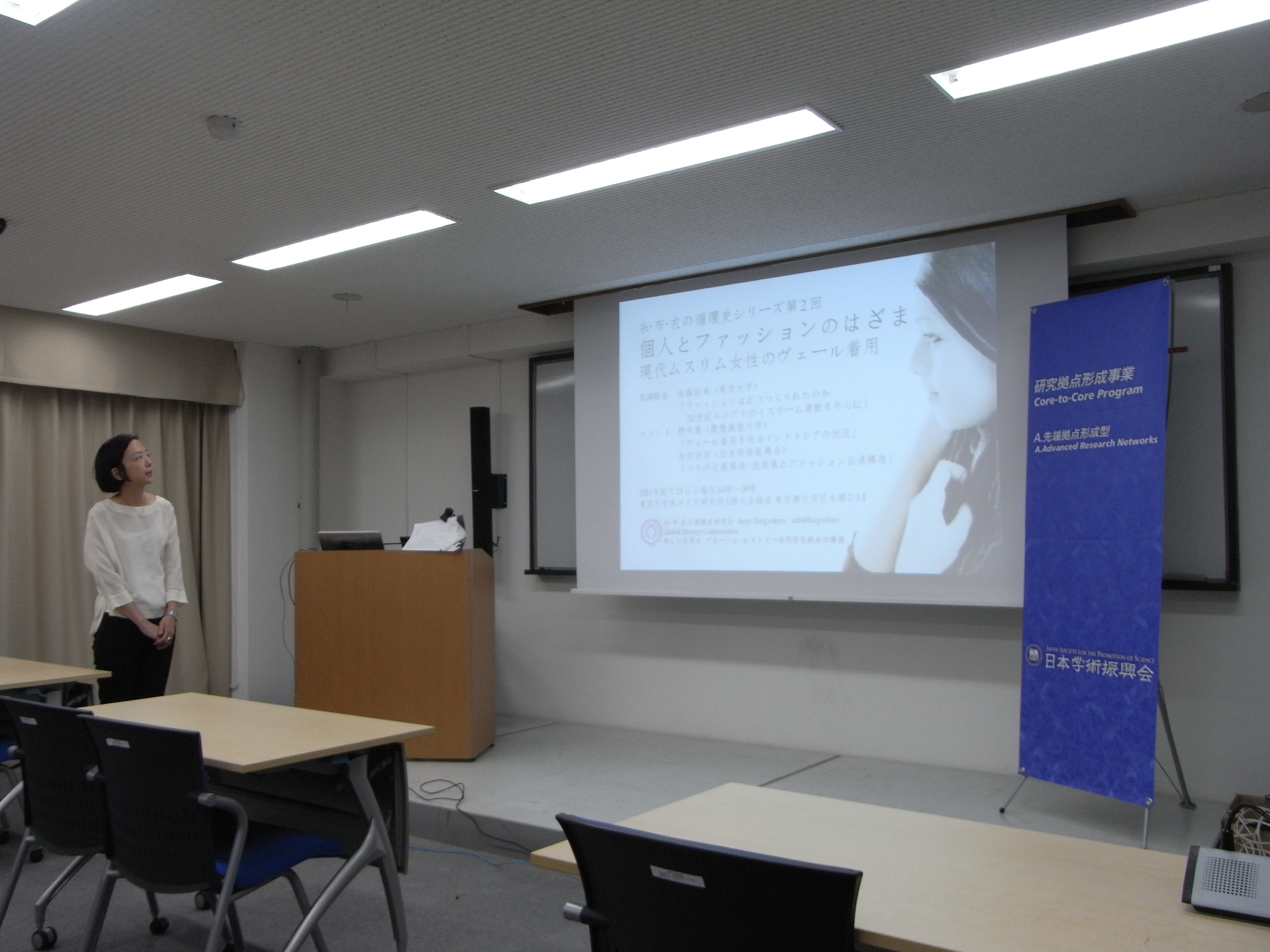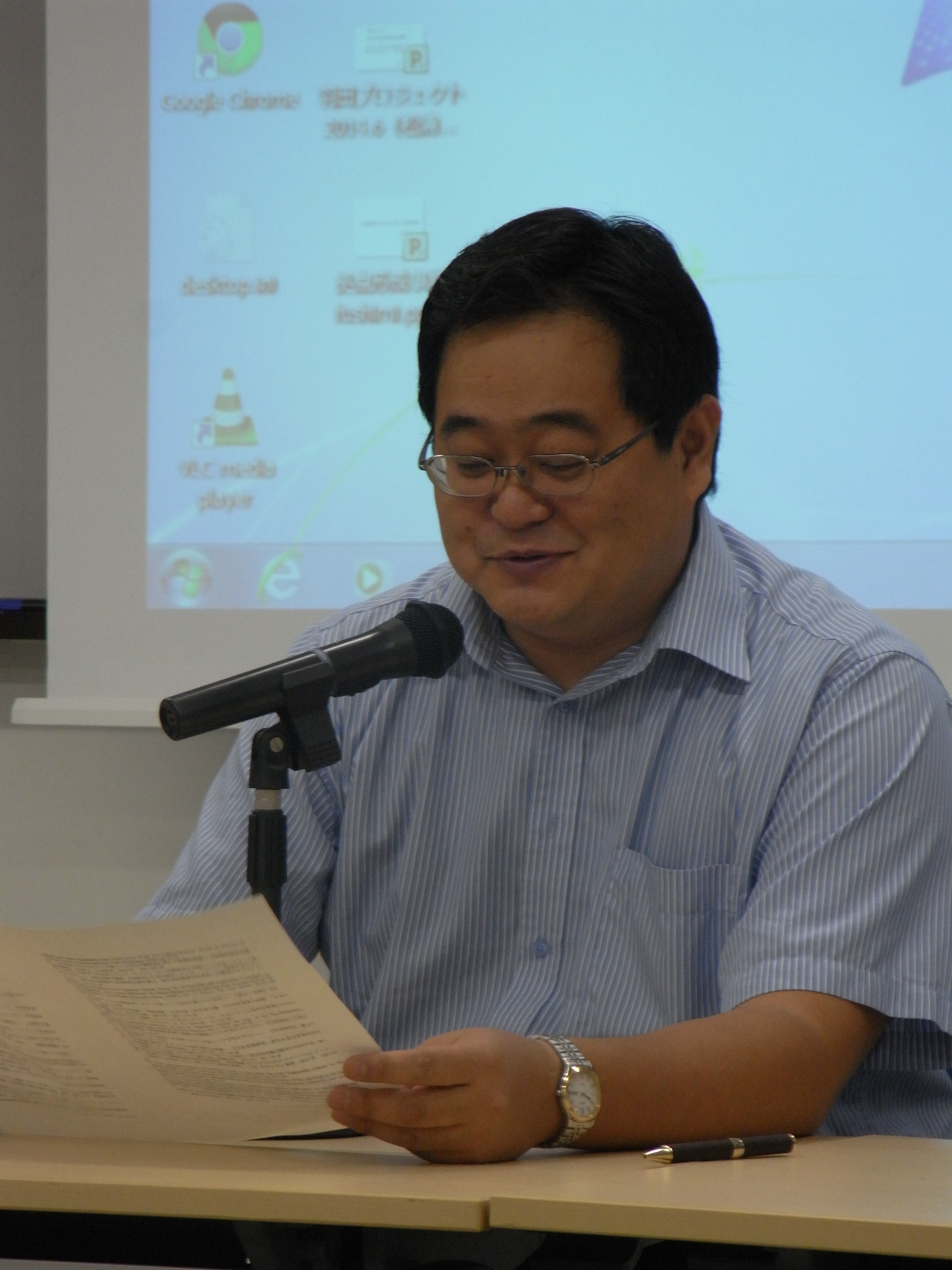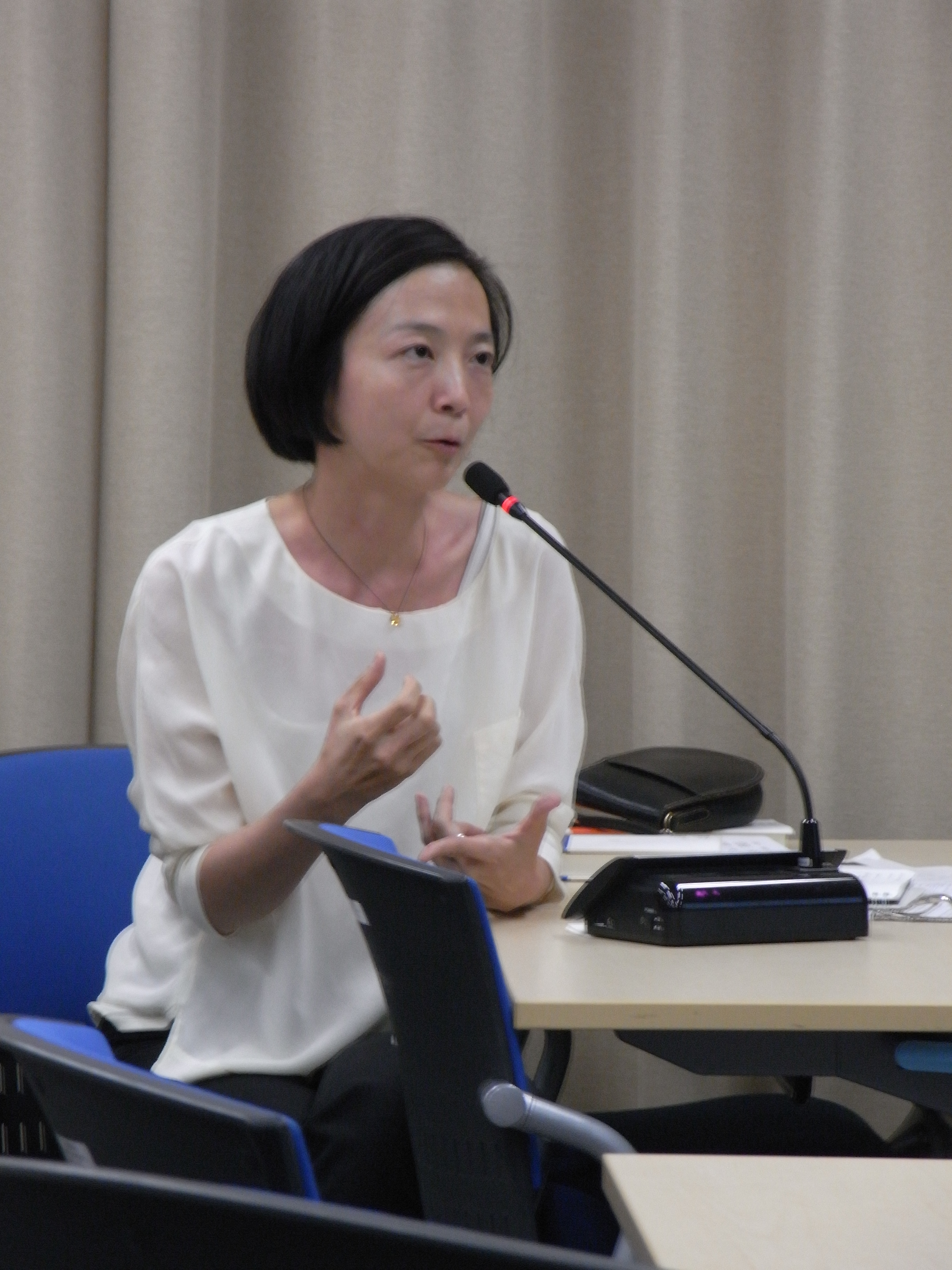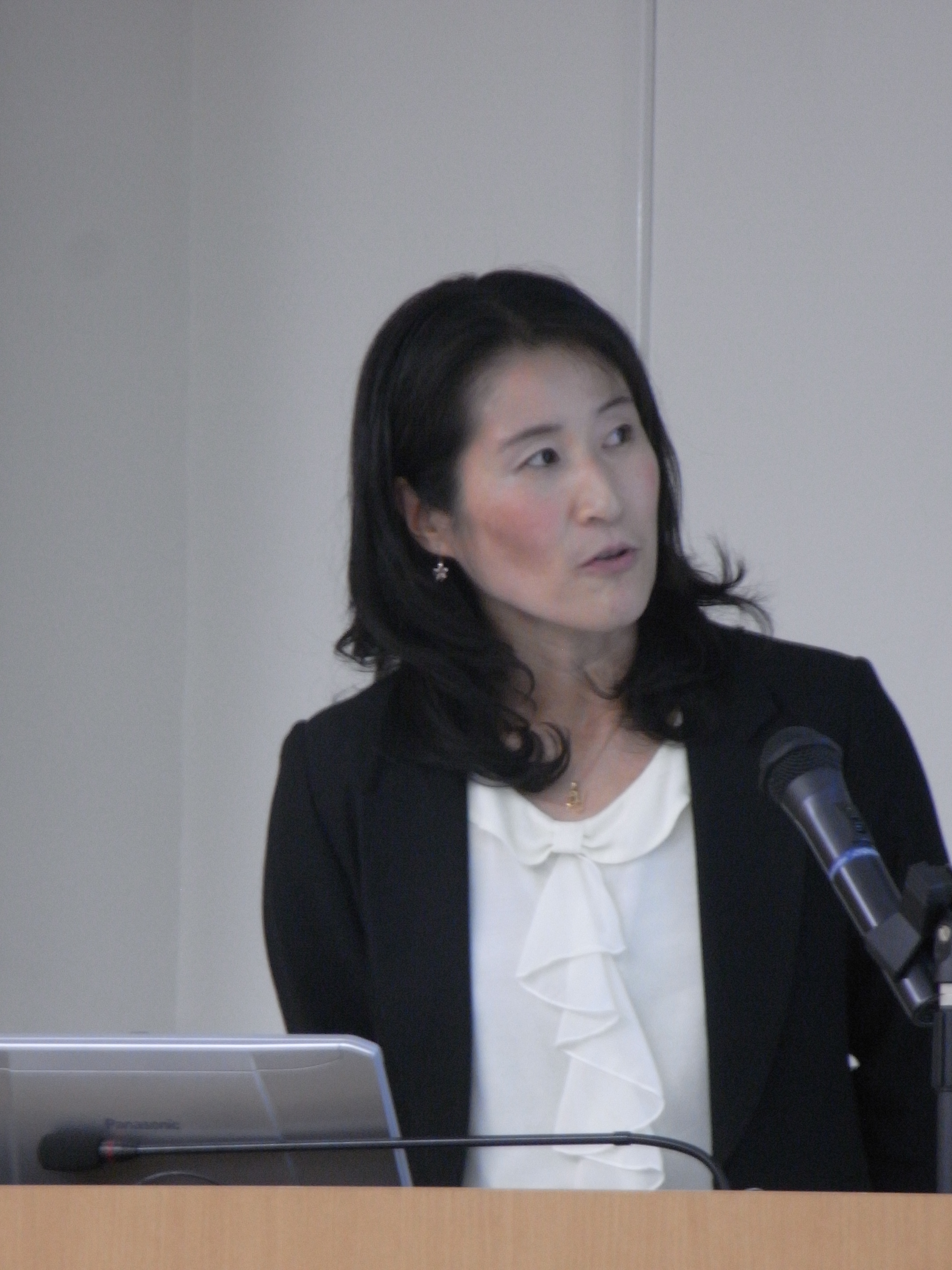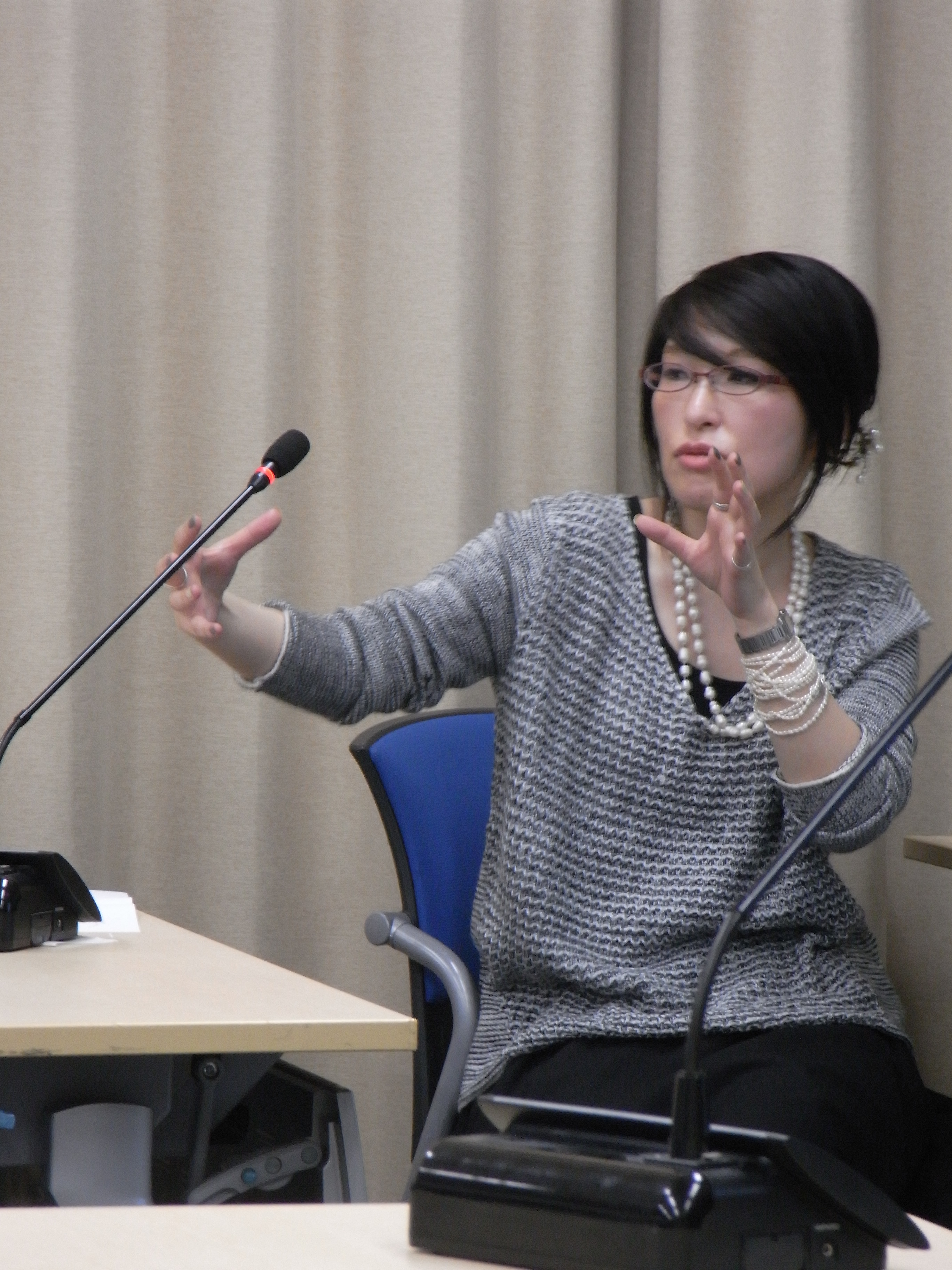2014.10.27
糸、布、衣の循環史会議 LCCG Conference
10月25日、これまで「セカンド・ハンド」会議として継続してきた研究会が、新たに「糸・布・衣の循環史」研究会として共同研究の会議を開催する運びとなった。参加者の8割以上が女性という、通常の研究会とは異なる雰囲気の中で3名の発表がおこなわれた。
まず、後藤絵美(東京大学東洋文化研究所)から「ファッションはどうつくられたのか:20世紀エジプトのイスラーム運動を事例として」と題し、著書『神のためにまとうヴェール』(中央公論新社)をベースに、1970年代から2000年代にかけて増加した女性のヴェール着用(=ヴェールのファッション化)について考察が示され、背景に「ヴェールと女性の信仰心を結びつける宗教言説の浸透」があったと結論づけられた。
近現代エジプトにおける衣服の変化はムハンマド・アリー朝に始まり、20世紀にはミッションスクールの女生徒や女性運動参加者がまずヴェールを脱いだ。50年代から徐々に頭髪、顔、腕や足の露出が目立つようになるも、第三次中東戦争の敗北を契機に信仰の欠如への反省が促される。ナセルからサダト政権に移り各地にイスラーム団体が結成され、男女ともに西洋化したファッションからの変化が見られたが、90年年代にはヴェール専門店が登場し、着用者が徐々に増え、2000年代、如実に普及した。
変化の要因の1つとして、後藤氏は人気説教師アムル・ハーリドが提示した宗教言説に着目した。それまでの主要な宗教言説が「ヴェールは男性の欲望を防ぎ、社会の平安を保つためにまとう」という立場なのに対して、ハーリドは女性が信仰を示すべく主体的にヴェールを被るように促したのであった。また、彼が説教の中で既存のヴェール着用条件を緩和したことで、ファッション性の可能性も広がったことを指摘した。
続いて、野中葉(慶應大学)からコメントが述べられた。後藤研究における個人の意識や内面のプロセスへの着目、原典から人気説教師の言説、芸能人の語りを扱った冊子まで活用する手法の新しさを指摘。インドネシアではスハルト体制崩壊後に、民主化や経済成長の一方でイスラームが顕在化しておりヴェール着用者が業界を主導して多様化・商品化を進めていること、政府の支援を受けた重要産業と位置づけられていることに言及した。その一方で、着用条件の解釈には幅があり、インドネシアの宗教権威の多様な姿が示された。
最後に、二人目のコメンテーター、角田奈歩(日本学術振興会)からの発表があった。エジプト人女性のヴェール着用はファッションだが、そもそも西洋中心のファッション構造がイスラーム世界に適用できるか? エジプト人、インドネシア人女性の間でのヴェール着用拡大はボトム・アップ型ストリート・ファッションである一方、宗教主導者の役割を強調すればトップ・ダウン型。従来の服飾史、ファッション研究は信仰の問題を無視。こうした状況に一石を投じたのがヴェール「ファッション」。
参加者を交えたディスカッションでは、「イスラームは男性の宗教であり、ムスリム女性の服は大した問題ではなかった、西洋近代を意識する文脈で女性のヴェール着用が問題として認識された」という見解が示された。また「衣服を着る理由は社会と自分の2つだ」という意見に対し、後藤・野中は、ヴェール着用を理解するには「個人と社会(権威)」のみならず「個人と神」の対話が重要と指摘。これに関連して「ヴェール着用は宗教規範と結びついた近代の現象で、ファッションというよりはコード。規範は個人に内在化している可能性もある。個人が全てを決定できるというのは19世紀ヨーロッパの幻想。ヴェール着用の問題は、規範と個人の間で、人々の価値観が揺れ動いている現象。宗教的(神)であれ社会的であれ、道徳であれ、規範があり、一方に環境から生じる、願望、生活様式上の理想がある。そこからファッションも形成される。そのせめぎ合いの中で、ヴェールの巻き方などの工夫が生まれる。」とフロアから発言があった。
開催者の杉浦は「近代個人が選択できるのがファッション」とし、ハーリド以降、権威(男性)の押しつけ(規範)を、神を介した主体的の問題に転換した点、社会の多様性を強調。今後のヴェール着用について、野中はヴェールの形は変わるとしても、身体の一定部分を覆うという方向性は変わらないのでは、という見解を示し、後藤は、宗教言説が今後も変化する可能性がある以上、ヴェールが廃れることも考えられると述べた。
(文責:東京国際大学・城西大学非常勤講師 井上直子)
The study group that had been holding regular “second-hand meetings” has reorganized itself into the “Linking Cloth-Clothing Globally (LCCG) Study Group. The group, under its new name, held its first joint study meeting on October 25. The event was marked by the presence of a large number of women, who accounted for more than 80 percent of the participants. In such an atmosphere, which is uncommon in ordinary study meetings, there were three presentations.
Goto Emi (Institute for Advanced Studies on Asia (IASA), The University of Tokyo) started the meeting with her presentation entitled “How was Fashion Created?: A Case Study on the Islamic Movement in Egypt in the 20th century.” Basing her talk on her recently published book, Kami no tameni matou veru (Veil for the Sake of God; Chuo Koronsha, 2014), Goto reviewed the process by which veils came into increasingly wide use (or became in vogue as a fashion) in the period from the 1970s to the 2000s. She concluded that this phenomenon took place against the backdrop of the “permeation of a religious discourse that linked the veil with women's religious faith.”
Changes in clothing in modern and contemporary Egypt began during the Muhammad Ali Dynasty, and, in the 20th century, girls attending mission schools and groups of women who were active in the feminist movement took the lead in ceasing to wear veils. From the 1950s, there was a gradual and noticeable increase in the number of women who dared to expose their hair, faces, arms and legs. However, this trend changed in the wake of the defeat in the Third Arab-Israeli War, as people were called upon to reflect on their lack of religious faith. As Muhammad Anwar El Sadat took the helm of the country in place of Gamal Nasser, Islamic organizations were established in various parts of the country, and a noticeable move among both men and women away from Westernized fashions began to occur. During the 1990s, stores specializing in veils started to appear, and veil-wearers gradually increased. With the onset of the 2000s, veils clearly came into wide use.
As an important factor underlying this change, Goto focused on the religious discourse of Amr Khalid, a popular Muslim preacher. Unlike the existing and influential religious discourse with its assertion that women should “wear a veil in order to put a curb on masculine desire, and thereby keep society on an even keel,” Khalid urged women to wear veils on their own initiative in order to express their religious faith. Goto also pointed out that Khalid’s sermons, which emphasized the need to relax existing conditions concerning veil-wearing, have had the effect of expanding the possibilities for a fashion-oriented use of veils.
Nonaka Yo (Keio University) commented on Goto’s presentation. Nonaka pointed to the novelty of Goto’s methodology, which focused attention on the consciousness and mental processes of individuals, and made use of a wide range of sources, including the holy books of Islam, a popular preacher’s discourses, and brochures reporting on talks given by entertainers. By way of comparison, Nonaka made mention of the situation in Indonesia, where, in the wake of the collapse of the Suharto regime, not only did processes of democratization and economic growth unfold but also things Islamic became highly visible and prominent. Nonaka pointed out, for example, that veil-wearers are playing a leadership role in urging the veil industry to press for the diversification and commodification of veils, and that the industry is receiving government support as an essential industry. It was also pointed out, as an indication of the diverse nature of religious authority in Indonesia, that considerable latitude is allowed on how to interpret the conditions concerning veil-wearing.
Next, Tsunoda Nao (Japan Society for the Promotion of Science (JSPS)) gave her presentation as the second commentator. She raised a question: While the veil-wearing by Egyptian women is a fashion, is it really possible to apply the Euro-centric fashion structure to the Islamic world? The expanding use of veils among Egyptian and Indonesian women may be characterized as a bottom-up type of street fashion, but the same phenomenon can be characterized as a top-down fashion, if importance is attached to the role played by religious leaders. Existing studies on the history of clothing and fashion have failed to pay attention to issues of religious faith. The use of veils as a “fashion” raised important questions about such a state of affairs.
During the discussion that followed these presentations, one member of the audience observed that “traditionally, Islam used to be a male-centered religion, and Muslim women’s clothing did not constitute a matter of grave concern, but it is in the process of its becoming conscious of Western modernization that the Islamic world has begun to take note of women’s veil-wearing as an issue.” Another participant asserted that “there are two factors prompting a person to wear clothes, namely, society and oneself.” Both Goto and Nonaka responded to this latter view by pointing out that in order to understand the wearing of veils, it is imperative to look not only at the relationship between “an individual and society (or social authority)” but also at “the dialogue between an individual and God.” In this connection, the following remark was made from the floor. “Veil-wearing is a modern phenomenon connected to a religious norm, and as such should be regarded as a code of conduct, rather than a fashion. There is a possibility that the norm is internalized by individuals. It is an illusion harbored by Europeans in the 19th century that the individual can decide on everything. The question of veil-wearing is a phenomenon expressing the oscillation of individuals’ values between the norm and the individual. There is a norm on the one hand, whether religious (or God-given), social, or ethical, and there is, on the other hand, a desire or an ideal about a lifestyle that stems from the environment, and this gives shape to a fashion. By experiencing a collision between the norm and one's own ideal the individual devises a new way of wearing a veil.”
Sugiura Miki (Hosei University), who hosted the event, defined “fashion as something that a modern individual can choose,” and emphasized that the advent of Khalid has made society more diverse than previously by transforming the practice of imposing a male-centered authority as a norm onto the question of how individuals should make choices on their own initiative through their interaction with God. As for the future, Nonaka was of the opinion that even if the form of a veil might change, its function of covering certain parts of the body would likely remain unchanged, while Goto stated that, given the probability that religious discourses would continue to change in the future, it is conceivable that veils might fall into disuse.









